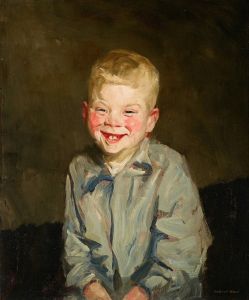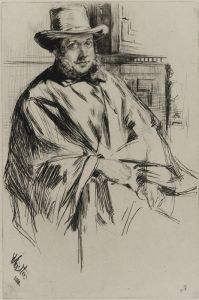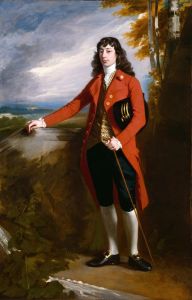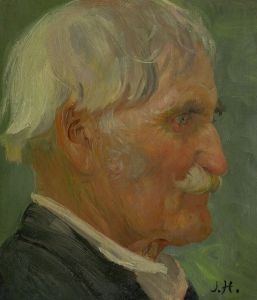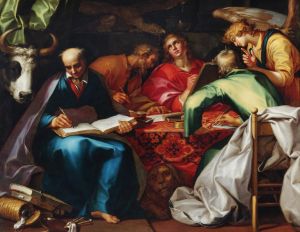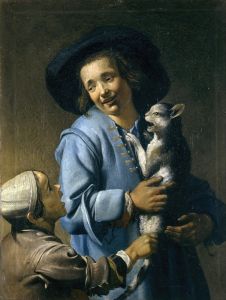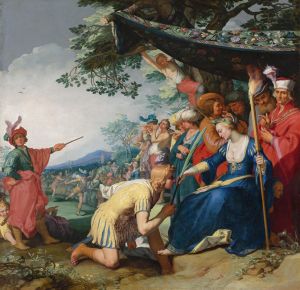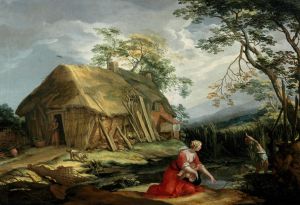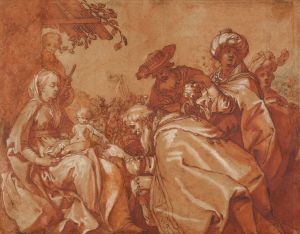
Old Man
A hand-painted replica of Abraham Bloemaert’s masterpiece Old Man, meticulously crafted by professional artists to capture the true essence of the original. Each piece is created with museum-quality canvas and rare mineral pigments, carefully painted by experienced artists with delicate brushstrokes and rich, layered colors to perfectly recreate the texture of the original artwork. Unlike machine-printed reproductions, this hand-painted version brings the painting to life, infused with the artist’s emotions and skill in every stroke. Whether for personal collection or home decoration, it instantly elevates the artistic atmosphere of any space.
Abraham Bloemaert (1566–1651) was a prominent Dutch painter and printmaker, known for his versatility and significant contribution to the development of Dutch art during the late Renaissance and early Baroque periods. Among his extensive body of work, the painting titled "Old Man" stands out as a notable example of his skill in portraiture and his ability to convey character and emotion through his subjects.
"Old Man" is a compelling representation of Bloemaert's mastery in capturing the human condition. The painting features an elderly male figure, depicted with a high degree of realism and attention to detail. Bloemaert's use of chiaroscuro, a technique that employs strong contrasts between light and dark, is evident in this work, highlighting the textures of the man's skin and the folds of his clothing. This technique not only adds depth to the painting but also emphasizes the subject's age and the wisdom that comes with it.
Bloemaert's training and background played a significant role in shaping his artistic style. He was born in Gorinchem, the Netherlands, and received his initial artistic education from his father, Cornelis Bloemaert, a sculptor. He later studied under several prominent artists, including Gerrit Splinter and Joos de Beer, and spent time in Paris, where he was influenced by the Mannerist style. This diverse training is reflected in his work, which often combines elements of Mannerism with the emerging Baroque style.
The painting "Old Man" is a testament to Bloemaert's ability to blend these influences. The composition is carefully balanced, with the figure occupying a central position in the frame. The background is kept relatively simple, ensuring that the viewer's attention remains focused on the subject. Bloemaert's use of color is subtle yet effective, with a palette that enhances the naturalistic portrayal of the man's features.
Throughout his career, Bloemaert was known for his versatility, producing works in a variety of genres, including religious scenes, landscapes, and mythological subjects. However, his portraits, such as "Old Man," demonstrate his keen observational skills and his ability to convey the inner life of his subjects. This painting, like many of his works, reflects the humanist ideals of the time, emphasizing the dignity and individuality of the subject.
Bloemaert's influence extended beyond his own work, as he was also a respected teacher. He taught several notable artists, including Gerard van Honthorst, Hendrick ter Brugghen, and his own sons, Cornelis and Frederik Bloemaert. His impact on the Utrecht School of Caravaggisti, a group of artists who were inspired by the dramatic lighting and realism of Caravaggio, is particularly noteworthy.
In summary, "Old Man" by Abraham Bloemaert is a fine example of the artist's skill in portraiture and his ability to convey the complexities of human character. Through his use of chiaroscuro, balanced composition, and subtle color palette, Bloemaert creates a work that is both realistic and evocative, capturing the essence of his subject with remarkable clarity. His contributions to Dutch art, both through his own works and his influence on subsequent generations of artists, ensure his place as a significant figure in the history of European art.







